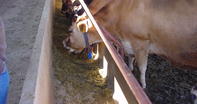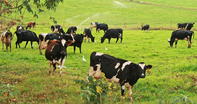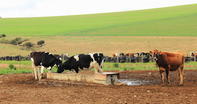While looking to buy dairy cows when starting a dairy farm, some basic feeding facilities must be put in place before bringing cows to the new farm.

Constructing facilities while cows are adapting to the new farm would stress them and harm their milk yield.
Lactating cows need a place where they can eat and be milked at least twice daily and an area to lay down to rest. Housing facilities for dry cows, calves and heifers of different ages are also required. Facilities required depends on the feeding system to be used.
Pasture-based System for Dairy Cows

For a pasture-based system, an area of grazing land with grass is required. The size of the pasture should be at least one hectare for every three lactating cows with an additional grazing area for dry cows and heifers. The pasture-based system also requires a storage facility for irrigation equipment to irrigate the pastures.
This is needed to supplement the natural rainfall, which can be irregular due to seasonal and long-term droughts. A pump and irrigation lines to the supply water for the pasture are required. Water troughs for drinking should also be provided on the pasture. This may be a fixed or a movable trough.
Zero-grazing System for Dairy Cows

An alternative system is a zero-grazing system. Cows are fed a total mixed ration (TMR) twice a day. A TMR is a method of feeding cows that combines forage, grain, protein feeds, minerals, vitamins and feed additives into a single feed mixture.
Animals are grouped and fed according to their production stages. For example, a dairy farmer would have separate open pens for lactating cows, dry cows, heifers of different ages and calves.
Each pen should have a feed and water trough of cow-specific sizes being smaller or narrower troughs for calves. Pen surfaces can be soil or concrete based. Soil based pens require a large area of about 50 to 100 m2 per cow depending on the intensity and rainfall pattern.
To improve drainage, the pen surface should slope away from the feed trough. If not, trampling around the feeding trough can cause deep mud and unhygienic conditions. A concrete apron at least 2-3 m wide along the feed trough, could prevent the area becoming wet and muddy.